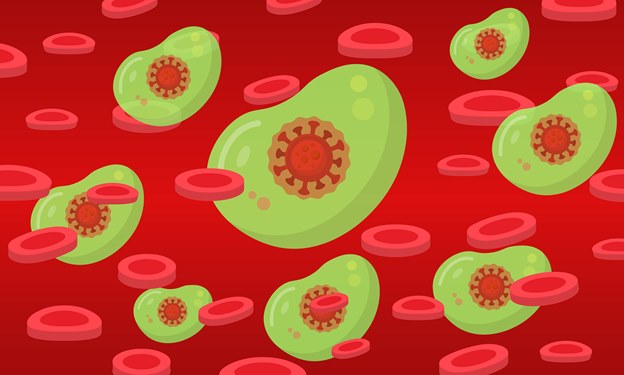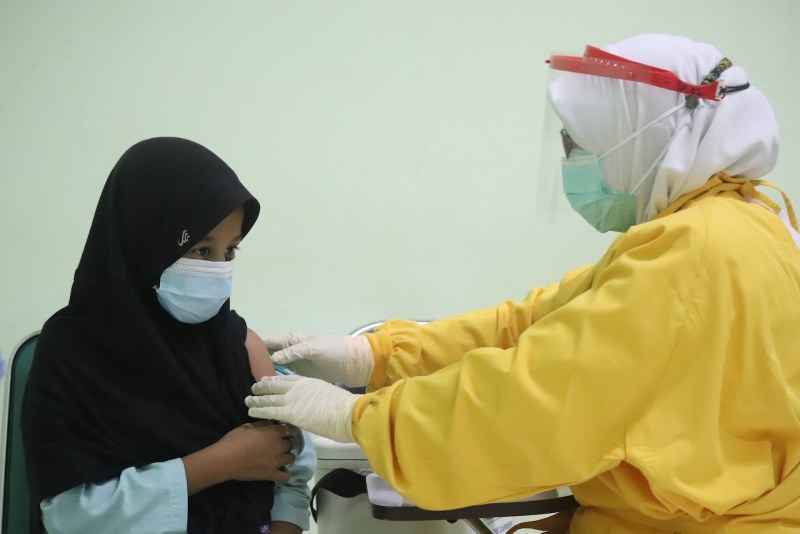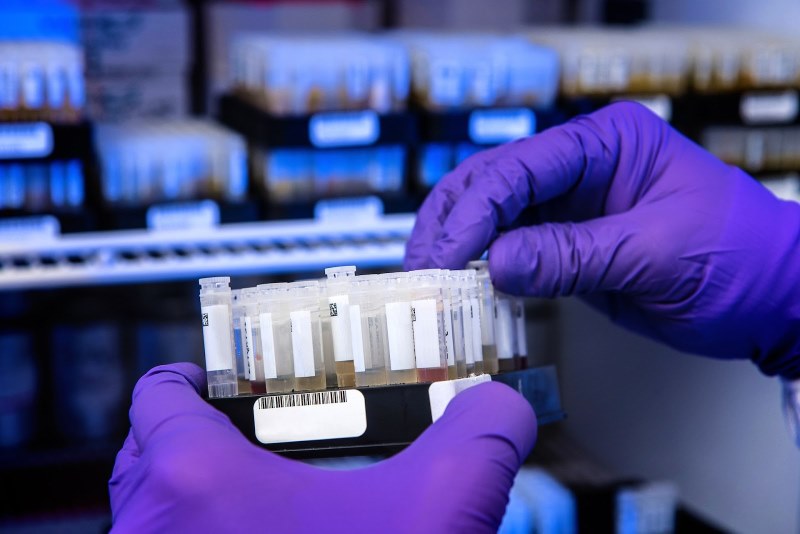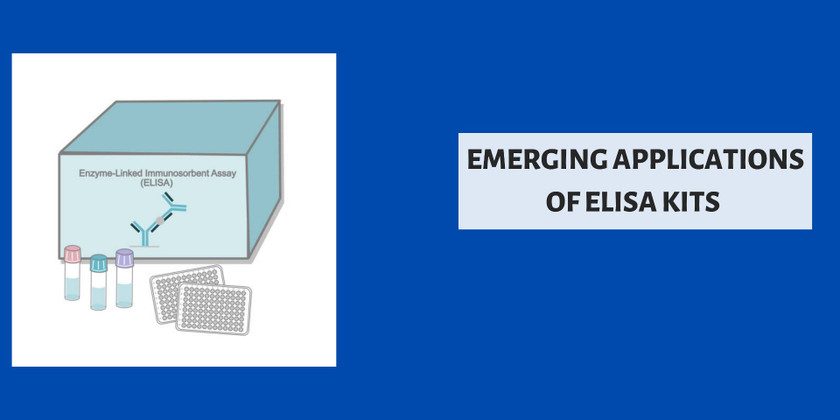Emerging Applications of Elisa Kits
Apr 5th 2023
Alt text – Emerging Applications of Elisa Kits
Enzyme-linked immunosorbent assay, or ELISA, is a test many labs employ to identify a wide range of antibodies. Antibodies are defined as protein molecules created by the human immune system to combat antigens, foreign substances that can often be harmful. Simply put, antibodies are made to counter antigens.'
The enzyme-linked immunosorbent assay, often known as ELISA, is a technique that allows researchers to determine the amount of a particular analyte (an antigen or an antibody molecule) contained inside a liquid sample. This ELISA kittechnique is applicable on a polystyrene plate format with either 96 or 384 wells, depending on your needs. Certain proteins or antibodies are expected to be present in the sample solution. Thus, those proteins or antibodies are used to cover the wells.
ELISA's primary steps are as follows:
How Does ELISA Test Work?
The principle of ELISA requires that if you aren't using a kit with a plate that has already been encased with antibodies, the first step of an ELISA is to coat a 96-well polystyrene plate with a target antibody or an antigen.
The next move is blocking (Blocking ELISA principle: every unbound piece is covered with a blocking compound.) After several washes, the plate is next subjected to incubation with an enzyme-conjugated antibody. An additional round of washes eliminates any unattached antibodies. The next step is to add a substrate, which makes a calorimetric signal. Plate reading concludes the process.

Each ELISA phase involves many washes to eliminate unbound material because the test relies on surface binding for differentiation. Any surplus liquid must be drained during this procedure to ensure that the solutions introduced in the subsequent test stage remain undiluted. The use of specialty plate washers helps to achieve accuracy.
Particularly when determining the protein content in diverse materials like blood, ELISAs can be complicated and include numerous intervening procedures. The process's most complex and variable stage is detection, where several levels of antibodies can help magnify signals.
Types of ELISAs
The common ELISA types available include:
Direct ELISA Principle
The application of Direct ELISA involves using an antibody directly coupled to an enzyme to identify an antigen coated onto a multi-well plate. If there are no ELISA kits available for purchase that can be used to detect your target protein, then consider using this detection approach.
Indirect ELISA
The antigen coated to a multi-well plate is detected in two stages or layers for indirect detection. Applying a primary antibody that is specific for the antigen but is not tagged comes first. The initial antibody is then linked to an enzyme-labeled secondary antibody.
The secondary antibody is typically anti-species and polyclonal. The most used ELISA format, the indirect assay, has the following benefits and drawbacks:
Pros
The advantages of ELISA test, done indirectly, include the following:
Cons
Sandwich ELISA
Sandwich ELISA applications frequently ask for the employment of matched antibody pairs, each particular for a distinct, non-overlapping portion (epitope) of the antigen complex. The wells are covered with a first antibody, which is referred to as the capture antibody.
The well is subsequently filled with the sample bioreagent solution. This phase is followed by adding a second antibody, referred to as the detection antibody, to assess the concentration of the specimen.
Competitive ELISA
In competitive ELISA (inhibitory ELISA), the primary antibody competes with antigens in the sample and the wells of a microtiter plate.
Applications of Elisa Kits

The various types of ELISA, such as the double antibody sandwich ELISA, indirect ELISA, and competitive ELISA, have led to a wide range of applications of ELISA in fields as diverse as medicine, forensic science, and food science.
1. Diagnostic Procedures
In medical diagnosis, the enzyme-linked immunosorbent assay (ELISA) has established itself as a reliable platform used worldwide to detect a wide range of diseases in both humans and animals. There are various HIV, influenza, Dengue fever, Ebola, Chagas disease, Leishmaniasis, Lyme disease, and West Nile virus detection ELISA kits available today. Some other conditions that may be detected using these tests include West Nile virus and Lyme disease.
Especially in plant pathology, the ELISA approach is receiving growing interest. ELISA has effectively eliminated the shortcomings of traditional serological analyses used in photodiagnosis.

In addition, the detection of cancer, contagious diseases, autoimmune disorders, endocrinology diagnostic tests, immunology and cytokines, cardiac indicators, insulin resistance, nephrology, thyroid activity, reproductive capacity, growth markers, skeletal and mineral metabolic activity, apoptosis, matrix metalloproteinases (MMPs), biogenic amines, food quality, and analytics are all possible in facilities using this biomarker
2. Humoral Immunity
ELISA has also shown considerable promise in examining the immune system's humoral reactivity to several infections. The bodily fluids' antibodies and other constituents have a role in the humoral immune response, and the monitoring and gauging of these constituents are of the utmost significance./
3. Immunology
The immune system acts as the body's protector and can function in either a cytoplasmic or humoral (innate or adaptive) fashion. The ability to measure and track immune response fluctuations is a cornerstone for comprehending immunological-related illness. ELISA has been proven time and time again to be the most reliable and cost-effective approach for these kinds of measurements and monitoring in a wide range of scientific contexts.
4. Testing for Pregnancy to Cancer Detection
Cancer biomarkers are among the biomolecular entities that present the most significant challenge when used as target analytes. Fortunately, the ELISA technique has made significant strides in recent years, which bodes well for its potential application in identifying cancer biomarkers.
Discovering reliable cancer biomarkers for early diagnosis is an ongoing endeavor. Clinical application of ELISA techniques has enabled the detection of tumors at earlier stages, particularly in ovarian and breast cancer.
In addition, the ELISA test can assess the amounts of illegal drugs such as cannabinoids, amphetamines, opiates, cocaine, benzodiazepines, and methadone in urine samples. The technique can also track the quantities of pharmaceutical drugs in individuals receiving treatment, such as anti-drug antibodies in rheumatoid arthritis and patients with inflammatory bowel disease.
Pregnancy can cause the expression of a variety of distinct biomolecular substances, such as human chorionic gonadotropin (hCG), luteinizing hormone (LH), follicle-stimulating hormone (FSH), estriol (E3), and thyrotropin-stimulating hormone (TSH). Several of these proteins can be detectable in the first trimester of pregnancy through ELISA in the mother's blood, saliva, or urine.
The most specific hormone that ELISA can find within the initial month following fertilization is HCG. At the sixth week of pregnancy, an ELISA test can identify the presence of the biomolecule estriol (E3) in the saliva of a pregnant woman. Estriol is one of the biomolecules associated with pregnancy.
Thanks to ELISA kits, these tests are currently accessible at home for most ladies, adding to the convenience.
5. Testing And Virus Detection
The advantages of employing ELISA to identify viruses include their applicability in developing nations, where infection rates are frequently relatively high, and their ability to approach the most vulnerable populations with on-site screening and immediate outcomes, providing for opportunistic screening (e.g., at the emergency department).
HIV

The first widely used HIV testing kit was an ELISA kit. This kit used the identification of human serum cystatin C to show which people are positive.
West Nile Virus
The West Nile Virus is diagnosed using an IgM antibody-capture (MAC) ELISA of subjects' serum or cerebrospinal fluid (CSF) sampled 8 to 21 days after the onset of the disease. This test has the additional capability of determining whether or not the virus has spread to the subject's central nervous system.
Newcastle Disease Virus (NDV)
NVD is a virus from birds that can be passed to people. Depending on the strain, NDV disease can range from mild breathing problems to diarrhea and other life-threatening clinical signs. ELISA is used to track the prevalence of NDV in a community, assisting in planning vaccination campaigns and identifying any NDV-infected flocks, from the deadliest strains (velogenic NDV) to progressively less severe variants (mesogenic NDV and lentogenic NDV).
6. Dietary Allergens
The protein molecules of allergens can be detected with the help of ELISA assays by first attaching antibodies to the allergen of concern and then observing the resulting colorimetric change. Manufacturers are currently legally required to identify their products concerning eight different allergens. These allergies are as follows: peanuts, tree nuts, soybeans, eggs, wheat, milk, fish, and shellfish. It has been estimated that these eight allergens are linked to over ninety percent of all of the cases of recognized food allergies that have been recorded.
Testing protocols in the food business have historically centered on finding pathogens that could cause illness or outbreaks. In most instances, fungal and bacterial infections were the primary causes, and other chemical pollutants came in second. But as technology has advanced and made it possible to automate and process a lot of food at once, more contaminants like food allergens have become a big problem for food safety.
Thus, a significant number of manufacturers rely on the application of ELISA in the food industry. It is the primary tool for locating dietary allergies, such as those found in milk, peanuts, walnuts, almonds, and eggs. ELISA can also be used to verify the food products' authenticity. This method is very beneficial in preventing any financial losses brought on by fraudulent replacements.
ELISA is widely employed in the food business to comply with regulations requiring allergy labeling. Because of the high sensitivity of ELISA, even trace amounts of possible food allergy contamination (on the order of parts per million) can be detected in this implementation. Another benefit is that it can test items like egg whites, milk, and oils, which competing techniques like PCR cannot.
7. Analysis of Platelet Antibodies

Patients with idiopathic thrombocytopenic purpura and systemic lupus erythematosus can be recognized as having these conditions through platelet antibodies in their serum. In these assays, alkaline phosphatase, an enzyme, is tagged with anti-human lgG so that it can be detected.
In addition to being a less costly and less complicated approach for detecting platelet antibodies, ELISA has been proven to enable more than other regularly used procedures such as the lymphocytotoxicity (LCT) and platelet immunofluorescence test (PIIFT).
8. Vaccine Development
The ELISA method is a helpful instrument that can be used to develop breakthrough vaccines. In many instances, the serum sample obtained from an immunized human or animal model can detect specific antibodies within the organism directed against particular antigens. This can be accomplished in carefully monitored trials in which the host organism is given purposeful injections of specific antigens of interest. Unfortunately, choosing the proper test for vaccine development is not always straightforward.
Since the human immune response is complicated, multi-dimensional, and polyclonal, selecting an appropriate assay that fits and coincides with the disease or defense against infection is challenging.
Conclusion
The ELISA test has many uses, including in food science, medicine, pharmaceuticals, toxicology, drug monitoring, immunology, immunotherapy, and transplantation.
Due to the rising incidence of newly discovered diseases and the consequent importance of prompt diagnosis, ELISA kit protocols will be relied upon more frequently. Since immunoassays provide quality control and an appropriate approach for promptly conducting the diagnostic process, there will be an even greater need for ELISA kits—the pharmaceutical industry, which is developing innovative vaccines and medication formulations.
The food industry, which is testing for allergies due to the growing health consciousness of the population, and the fight against emerging viral infections to fend off potential pandemics are some of the major markets. Fortunately, interested readers can learn more about ELISA kits and other biochemical products and services like custom gene synthesis on this blog.

